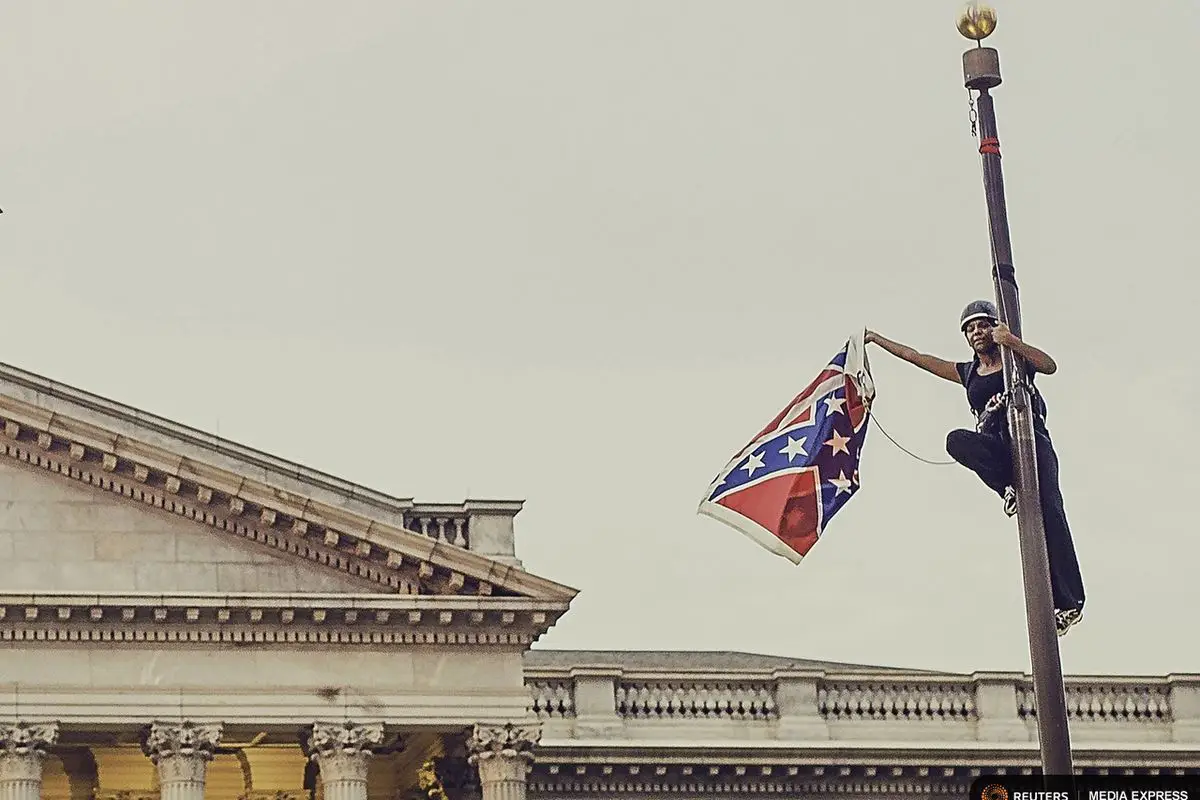The law isn’t always right. And sometimes you have to bend a couple rules to make that known.
These are a few of the women who protested injustices perpetrated by a prevailing entity. They did not let the concept of jail time hinder their drive or motivation — the potential for incarceration would not stop them from making their voices heard. Here are their stories.
1. Therese Okoumou
Not all heroes wear capes. Sometimes they wear t-shirts that say “Trumpcare makes us sick” as they climb the Statue of Liberty to prove a point.
While the rest of America was setting off fireworks and sporting red, white and blue this past July 4, Therese Okoumou was protesting the current administration’s immigration policies that have resulted in the immoral separation of parents and children.
An immigrant from Congo, she scaled the Statue of Liberty and refused to come back down until the detained children were all released. She was arrested with multiple charges stacked against her. Okoumou wasn’t the only one; other protesters were also arrested for climbing the statue and hanging a banner that said “Abolish I.C.E.”
The Statue of Liberty is a beacon of freedom and hope, once a welcoming figure to immigrants as they completed their journeys to America. Okoumou’s actions symbolized this idea, making a statement that urged the government to treat humans with the respect and dignity they deserve rather than enforcing a zero tolerance policy with inhumane effects.
Okoumou and the other protesters who climbed the Statue of Liberty caught the attention of the eyes of both society and the government, and her powerful message will be remembered.
2. Bree Newsome
The Confederate flag was the symbol of the South seceding from the Union during the Civil War, an emblem of white supremacy directly linked to the idea that the slavery should not be abolished. It still lingers in present day America, showing that racism and white supremacy are still very existent.
About two years ago, a Confederate flag was billowing away in front of the South Carolina state house, and an African-American woman named Bree Newsome decided that she’d had enough. She climbed up a 30-foot flagpole and took down the flag, her actions showing the country that she would not stand for these embodiments of racism.
Newsome was promptly arrested, but she had seen it coming and did not care. She took down the flag to “[dismantle] white supremacy and [build] toward true racial justice and equality.” Powerful words from a powerful woman.

3. Emmeline Pankhurst
Women’s suffrage movements were necessary to usurp male dominance around the world. Half of society had no representation in their own governance, and this had to change. Emmeline Pankhurst was outraged by this inequality and led the fight for women’s suffrage in the United Kingdom.
She was the founder of the “Women’s Social and Political Union,” an organization that sought to enfranchise women. The WSPU was not afraid to harness a confrontational style, petitioning for politicians to comply and engaging in vandalism and destruction of public property to prove their point.
Once imprisoned, they participated in hunger strikes, continuing to push for their voices to be heard. Pankhurst herself was arrested for throwing rocks at the home of the prime minister. She was willing to do whatever it took for women to acquire the right to vote. And because of her relentless fighting, women won that right.
4. Rosa Parks
Perhaps one of the most iconic and well-known examples of civil disobedience, Rosa Parks became an emblem of the civil rights movement. Back then, buses were segregated by race— white people were to sit in the front, and African Americans were confined to the back.
Parks decided that she was not going to comply with the racist “separate but equal” system put into place, and sat at the front of the bus. When a white passenger asked her to give up her seat, she refused. She stood her ground because the law invalidated her rights as a human being.
Parks was arrested, but her narrative was not over. Her actions led to a boycott of the bus system. Eventually, the injustice in question even reached the Supreme Court, where segregation on public transportation was outlawed, all because one powerful woman had decided to stand, or rather sit, her ground. One simple, but mighty action allowed her to spur the Civil Rights Movement.
These women are just a few of the empowered females that fought for what they believed in. Women are a force to be reckoned with, unafraid to take action so that injustices cease to exist.
And until that happens, they won’t be stopped.










